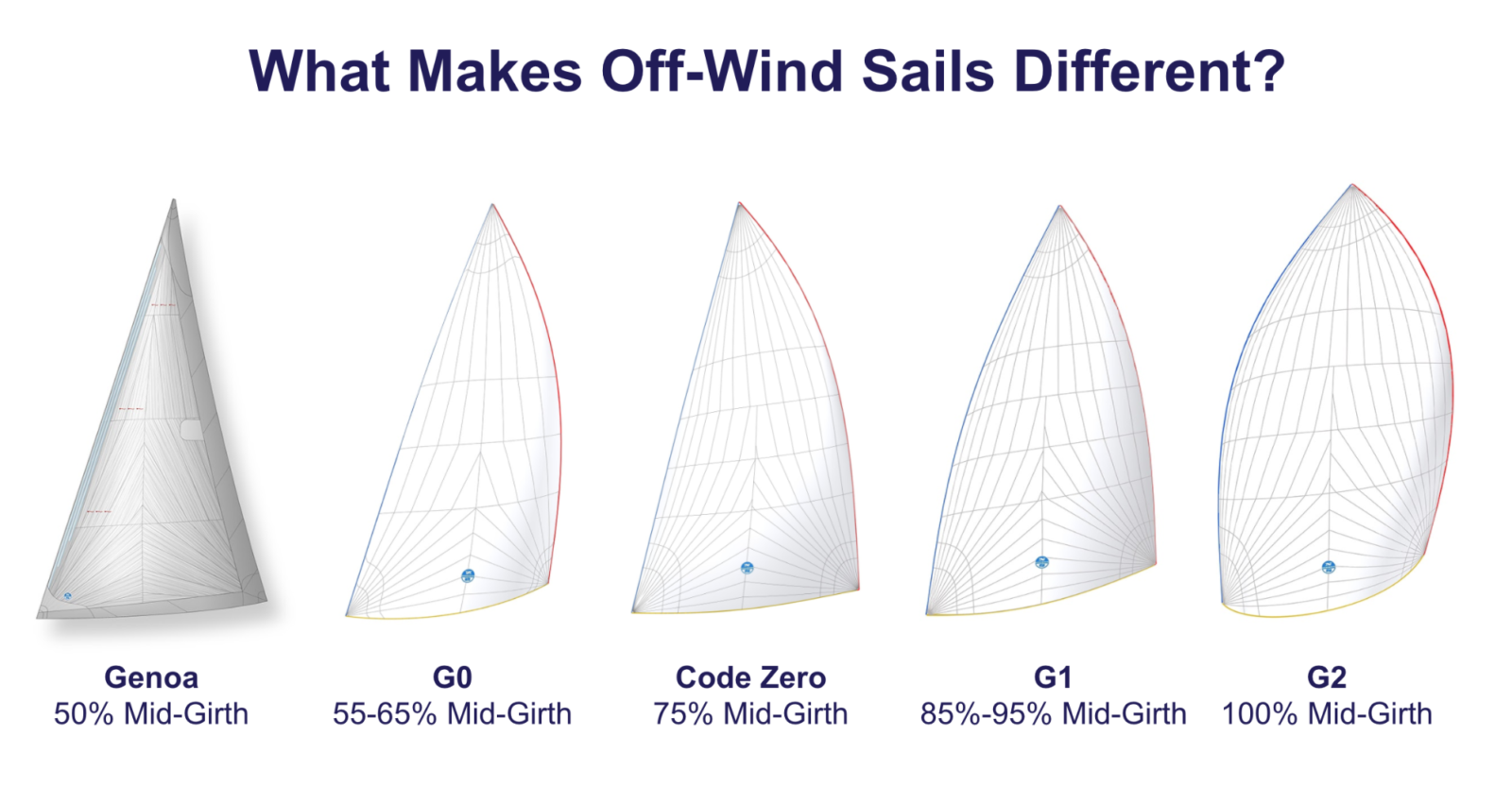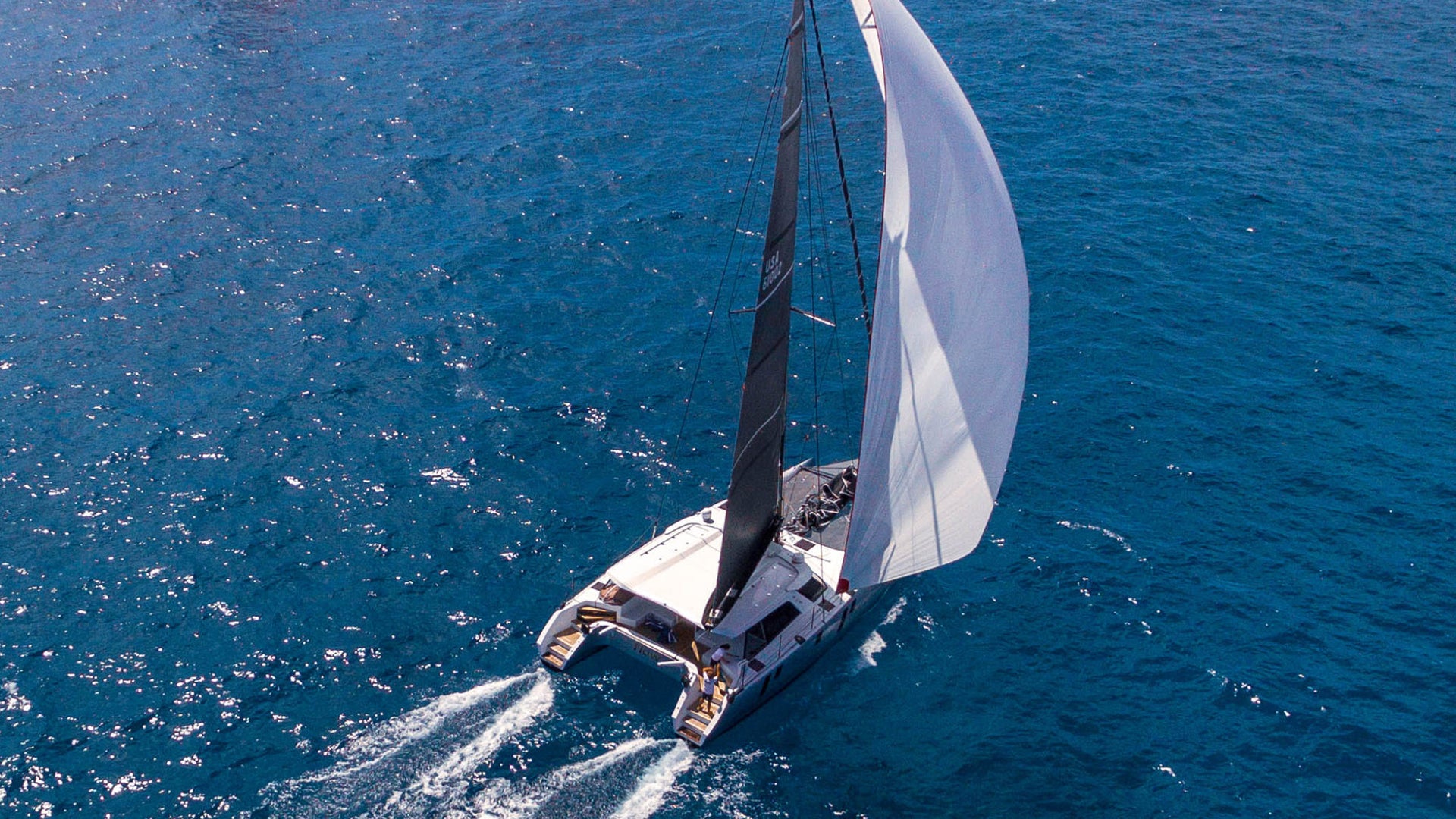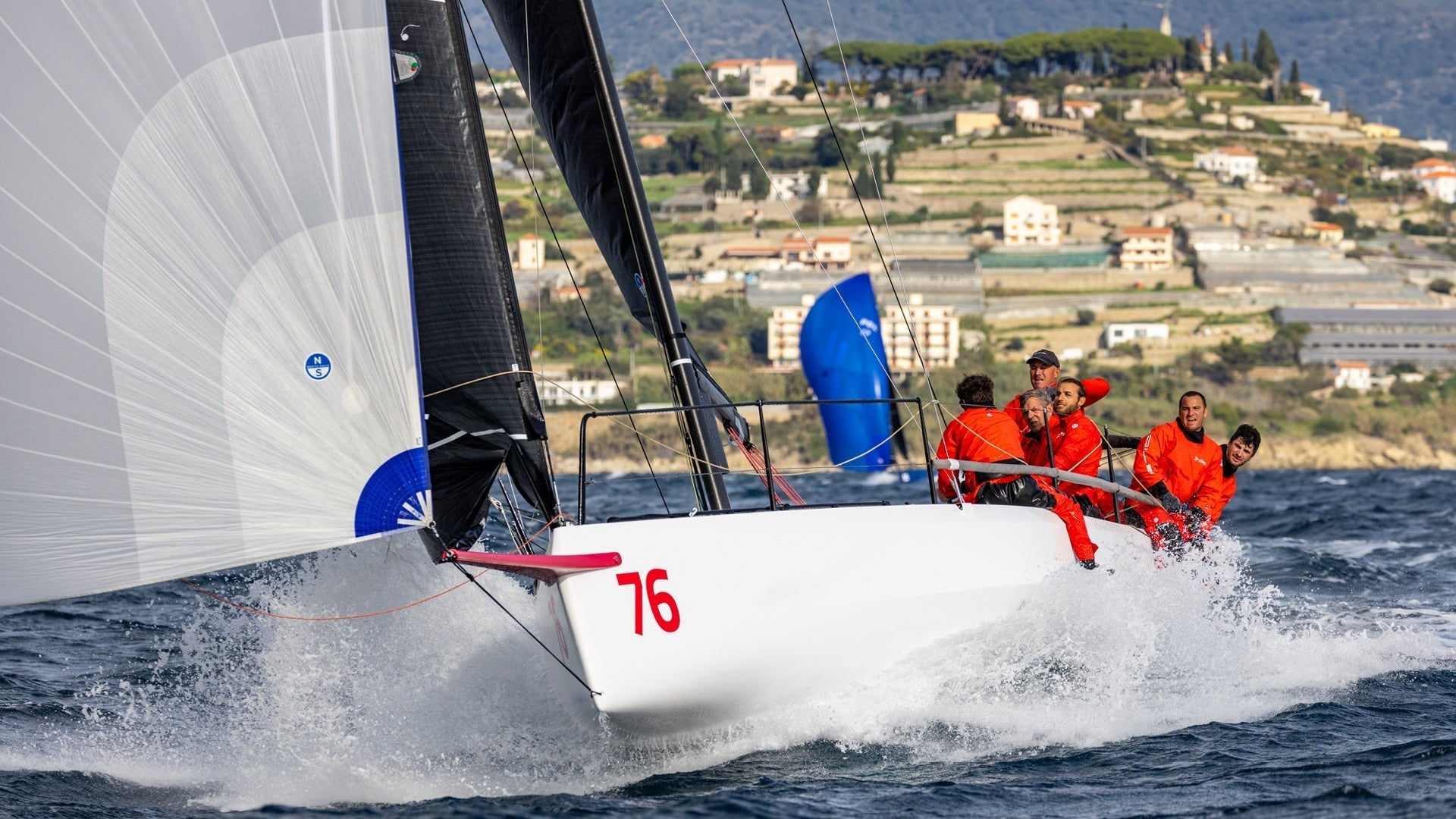MULTIHULL DOWNWIND SAIL DESIGNS, HANDLING OPTIONS AND TECHNIQUES
CRUISING YOUR MULTIHULL
More On Downwind Sail Designs, Handling Options and Techniques

Multihull cruising has become a lifestyle by even the most competitive racers. These boats are great platforms for the outdoor living we enjoy in our moderate climate as well as being easy to cruise short-handed by couples. North Sails cruising experts share how techniques vary on multihull cruisers, and provides his tips on how you can make the most of your next sail.
The design for these boats has evolved to maximize cabin space with taller, more powerful rigs and self-tacking Jibs. These sails and systems have significant sail handling benefits with tacking becoming a straightforward process; however, by not overlapping the mast like a traditional genoa, these sail plans often lack area leading to sluggish performance in lighter conditions. At North Sails, our designers have been working hard to offer solutions for all styles of multihulls that improve performance but still allow ease of handling.

Understanding Your Usage Chart
Plots change depending on the performance of the boat. Faster boats may not see the broader angles that the G2 offers. A stable flying G Zero can be designed with enough overlap to gauge into the G One zone.

How do you explain the difference?
Determine the mid-girth of the sail. Using your usage plot, you’ll see the ranges of each sail, determined by apparent wind angles and wind speed.

The Code 55 Screecher
For a boat that does not have an overlapping Genoa, the Code 55 screecher is the first sail to consider.
This sail is set from the bowsprit and is constructed in laminate materials to mimic a traditional Genoa in light winds and can sail within 15 degrees of the Self-tacking jib TW angles for a considerable gain in light air performance.
The Code 55 is engineered to cope with the considerable loads generated when being used close to the wind even in light conditions with the added benefit that they can then be used at wider angles as the wind increases, increasing the range of use considerably. Recommend options are a high-quality torque cable with a bottom-up furling system. A clew velcro to stop accidental unfurling gives an extra level of security and safety. If your preference is to store the sail hoisted, a lightweight UV can be added.

The G-Zero
The G Zero is the most popular cruising multihull downwind sail offering great versatility over a wider range of wind angles.
The G zero is a best-of-both-worlds sail for ease of handling and successful downwind miles. G Zeros feature a deeper shape and wider girth compared to a screecher. they are generally designed to sheet outside the main shrouds and excel at the beam close to reaching. G Zeros are compatible with both Top-Down internal and bottom-up furling systems or can be used with a snuffer. These sails can have lightweight UV strips, but because of their lightweight, we recommend lowering the sail when not in use and have no UV for the optimum performance. Cruisers sometimes use these sails without the Mainsail hoisted, and utilizing the width of the multihull and tweaking the sheet forward and outboard can achieve surprisingly low sailing angles.

The G2 Asymmetrical Runner
For Cruisers wanting the ultimate in downwind efficiency but less focused on ease of use, the A2 Asymmetrical Spinnaker is the answer!
These sails are designed full in-depth and girth to achieve the best-running speed and VMG to cover the most miles. Due to being specifically optimized to deeper sailing angles, we would suggest a seamless inventory should have an additional reaching option to fill the gap between the headsails and this sail. For short-handed ease of use, we recommend either a spinnaker Snuffer or a Top-Down Furling system.
The use of a tweaker or handy billy system to alter the sheeting can significantly increase the range of sailing angles and wind ranges. If the upper luff is folding first as you ease the sail and run deeper, you should deflect the sheet forward and outboard to stabilize the sail, so the luff breaks evenly, particularly important when using under autopilot for minimal trim adjustments. It is common for cruisers to use these sails with no Mainsail hoisted but always remember to use the Main topping lift and mainsheet combination as an additional backstay for added security and support to the mast.
The Tweaker or Handy Billy for Cruisers
These are reasonably lightweight purchase systems, typically ranging from 2:1- 6:1. They have a range of uses aboard any boat, but for downwind sails with a fixed sheeting position, they give the ability to change the twist and set of the sail easily while still sheeting the main load through the standard sheeting block and winch location.
The system works best with a snatch block that allows the lowest possible friction for the deflecting sheet; however this can be as simple as a friction ring, snap shackle, or carabiner.
In the simplest of forms and even without a purchase system, once you get to know your deep sailing mode requirements, this tweaking can be achieved by a fixed webbing or rope length forward of the stay and can be set up before the sail is even hoisted. A purchase system that can be adjusted under load, however, will give the best performance and stability as well as doing double duty to act as a boom preventer against an accidental gybe and also keep the Mainsail stable if you don’t have a vang.

Sailing angles and techniques for best handling outcomes
Whether it be a spinnaker Snuffer or either a top-down or bottom-up furling system, there are things you can do to make the process of sail setting or retrieval as successful as possible.
The first thing to establish is the best angle to have the boat heading in relation to the true wind. This will be a sliding scale through the wind range with a closer angle required in lighter winds and a deeper angle in heavier winds.
If you are too close to the wind with any of the above options, the sail will deploy too rapidly and not at a controlled pace, causing higher sheet load and flogging of the sail, and making sheeting -in much more drawn out and labor-intensive.

The same goes for the furling away or snuffing of a sail; the heading must be far enough away from the wind to relieve the pressure in the sail. With a Snuffer, there is plenty of sheet that is perfect to have pre-set on the winch or in a tailor or cleat for the deployment of the sail. Once you have decided upon the best angle of sail, you should experiment with the sheet setting, and you will come to a conclusion that in some wind ranges to see the sail fill with air and set close to the required sheet setting with only a small trim on required. If you are unfurling a sail by being deep enough, you will be able to release the furling line and tail in the vast majority of the sheet without significant load. From this point, you can then change the course and trim the sail as required without flogging. At the same time, sailing an angle that is too deep could make the sail unstable and risk either accidental gybe or wrapping of the sail fabric around the forestay.
Furling line paths that are simple and run cleanly are a must for the best outcomes
Consider furling or snuffing for gybing, especially in higher winds, and decide to take sails down before the bad weather hits, not when you are already in the grips of a storm!
My suggestions for A2 setting and retrieval angles are as follows if you log these from your own experiences on your boat and always go back to them, your downwind sailing will not only be more enjoyable, but you will prolong the life of your sails and rigging.
- 0-5 knots- Heading at 145 degrees of true wind
- 5-12 knots- Heading at 155 degrees of true wind
- 12-18 knots- Heading at 165 degrees of true wind
- Above 18 knots of wind most Multihulls will not require an A2 to achieve great downwind VMG.
Other suggested valuable information to log and keep on hand to refer to are;
- When to add the reefs in the Mainsail
- When and how much tweaker to use in various wind ranges and angles of sail
- When to partly furl headsails and so on
Through consultation with your North Sails Multihull Expert, we can provide you with a range of downwind sail options to match your needs.










